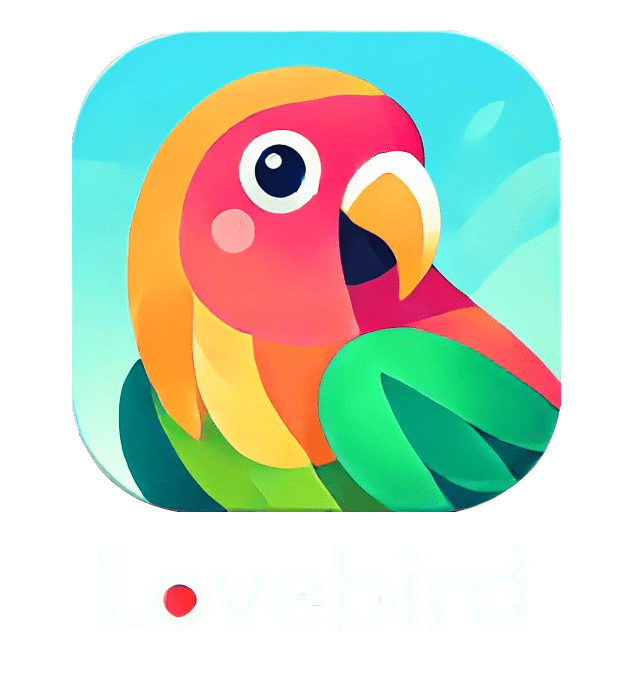The Ultimate Lovebird Species Guide: Choosing the Perfect Pet, Caring Tips, and a Beginner-Friendly Comparison Chart
Lovebirds are one of the most charming and popular pet birds worldwide. Known for their affectionate nature and vibrant plumage, they make delightful companions for bird enthusiasts and first-time owners alike. In this ultimate lovebird species guide, we will explore the different lovebird species and help you choose the perfect pet for your home. This guide will walk you through species characteristics, selection tips, beginner-friendly options, essential care advice, and a comparison chart to simplify your decision-making process.

Exploring the Lovebird Species Guide: An Overview of Popular Types
Lovebirds belong to the genus Agapornis and are small parrots known for their social and playful behavior. There are nine recognized species, each with unique traits and characteristics. Some of the most popular lovebird species include:
- Peach-Faced Lovebird (Agapornis roseicollis): Known for their peachy faces and green plumage, these birds are adaptable and great for beginners.
- Fischer’s Lovebird (Agapornis fischeri): With a striking orange face and green body, Fischer’s lovebirds are playful and slightly smaller than other species.
- Black-Masked Lovebird (Agapornis personatus): Distinguished by their black “mask” and vibrant green and yellow body, these birds are visually stunning and social.
Each species has its unique personality and care requirements. Some are more vocal, while others are quieter and easier to handle. Understanding these distinctions is crucial in choosing lovebirds for pets that will suit your lifestyle.
Learn more about the nine species of Agapornis on The Spruce Pets
Choosing Lovebirds for Pets: Factors to Consider for Your Home and Lifestyle
Selecting the ideal lovebird goes beyond their appearance. Consider the following factors to ensure your feathered friend fits well into your lifestyle:
- Activity Level: Lovebirds are active and playful, requiring plenty of space and stimulation. Are you prepared to provide toys, a spacious cage, and out-of-cage playtime?
- Social Needs: Lovebirds thrive on social interaction. They can be kept in pairs, but if you choose a single bird, be ready to devote extra time for bonding and engagement.
- Noise Level: While not as loud as larger parrots, lovebirds can be vocal, especially during early mornings and evenings.
- Time Commitment: These birds can live up to 15 years, making them a long-term responsibility.
By understanding these needs, you can create a harmonious environment for your pet and ensure a happy coexistence.
For tips on setting up a bird-friendly home, check out BirdChannel.
Best Lovebird for Beginners: Top Picks for First-Time Bird Owners
If you’re new to the world of birds, selecting the best lovebird for beginners is critical to your success as an owner. Here are some beginner-friendly options:
- Peach-Faced Lovebirds: Their adaptability, friendly nature, and relatively low maintenance make them ideal for beginners.
- Fischer’s Lovebirds: Slightly smaller and less demanding, Fischer’s lovebirds are easy to care for with proper guidance.
- Masked Lovebirds: Though a bit more reserved, these birds are great for owners seeking a visually appealing companion.
Each of these species offers a balance of beauty, temperament, and manageable care, ensuring first-time owners enjoy the experience of bird ownership.
Discover beginner-friendly bird care tips on ParrotForum.
Caring for Lovebirds: Essential Tips for a Happy and Healthy Companion
Proper care is vital to keeping your lovebird happy and healthy. Here’s what you need to know:
- Diet: A balanced diet includes high-quality pellets, fresh fruits, vegetables, and occasional seeds. Avoid foods like chocolate, avocado, and caffeine, which are toxic to birds.
- Habitat: Provide a spacious cage with perches, toys, and a clean environment. Ensure the cage is placed in a safe, quiet corner with ample natural light.
- Social Interaction: Spend time daily interacting with your lovebird to build trust and prevent loneliness.
- Health Maintenance: Regular veterinary checkups, clean water, and an active lifestyle are essential to avoid illnesses like psittacosis or mites.
Consistent care will ensure your lovebird remains a vibrant and loving companion for years to come.
Explore expert care advice on VCA Animal Hospitals.
Lovebird Comparison Chart: Key Differences to Help You Pick the Perfect Match
To simplify your decision-making, here’s a quick comparison of the most popular lovebird species:
| Species | Appearance | Temperament | Noise Level | Best For |
|---|---|---|---|---|
| Peach-Faced Lovebird | Green body, peach face | Friendly, adaptable | Moderate | Beginners and families |
| Fischer’s Lovebird | Green body, orange face | Playful, curious | Low | Small apartments |
| Black-Masked Lovebird | Black head, yellow chest | Social but reserved | Moderate | Experienced owners |
This chart highlights the primary differences in appearance, temperament, and noise level, helping you choose the lovebird that best aligns with your preferences.
Conclusion
Choosing the perfect lovebird species for your home is an exciting journey filled with possibilities. By understanding the unique traits of different species, considering your lifestyle, and providing proper care, you can enjoy a rewarding bond with these charming birds. Whether you’re a first-time owner or a seasoned bird enthusiast, this guide equips you with the knowledge to make an informed decision and offer your lovebird a happy, fulfilling life.






